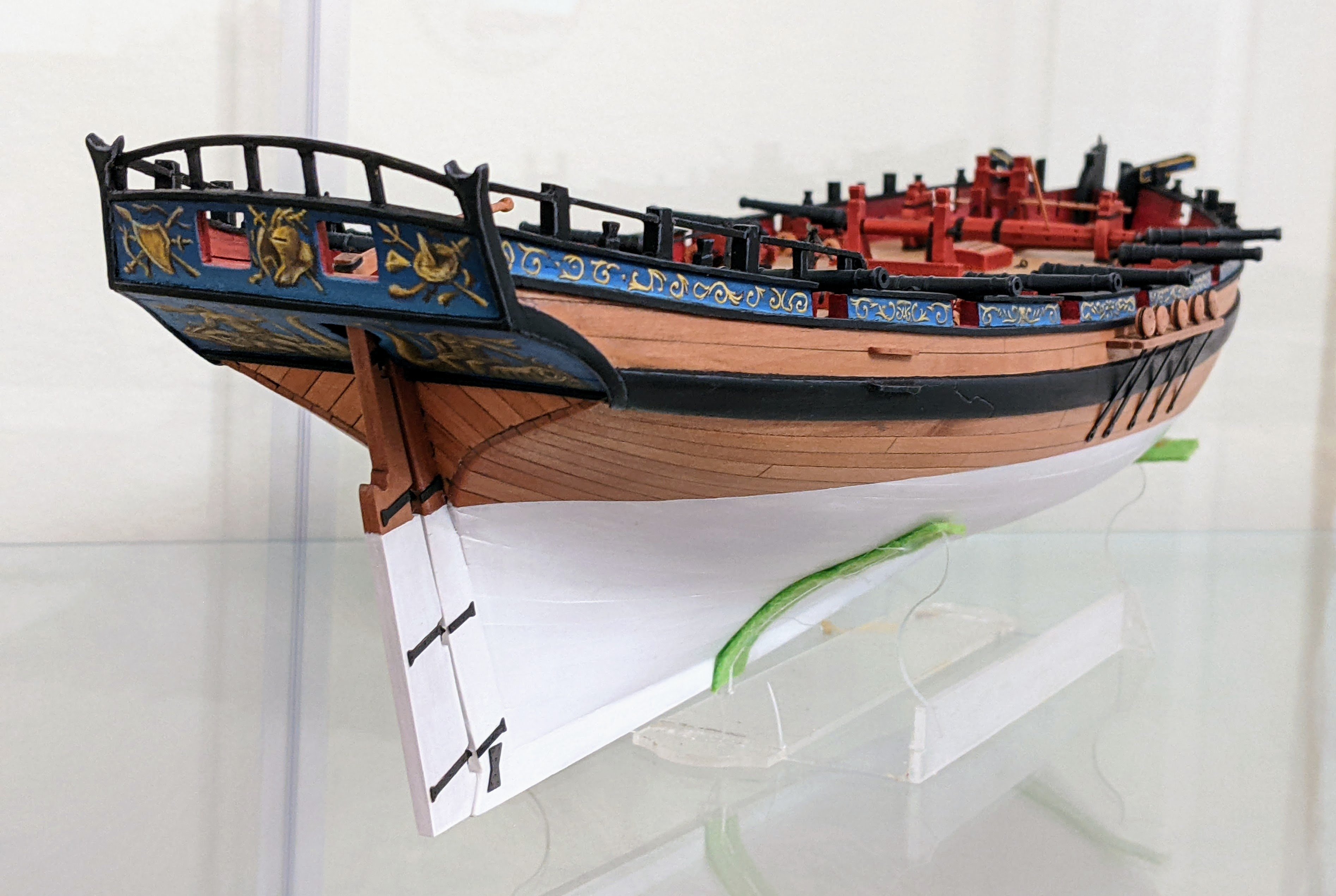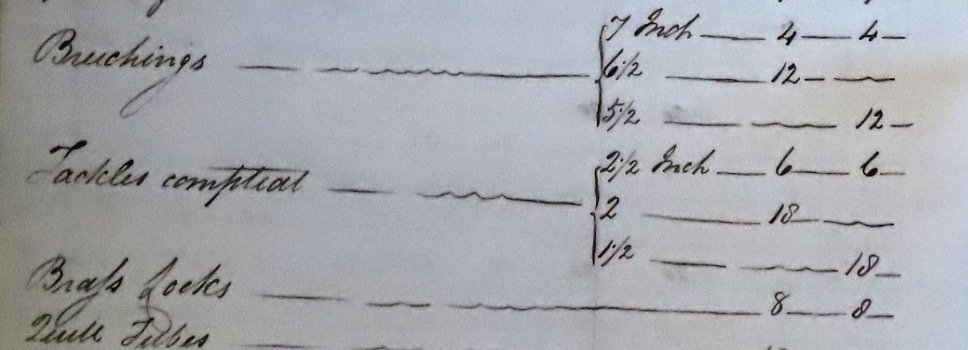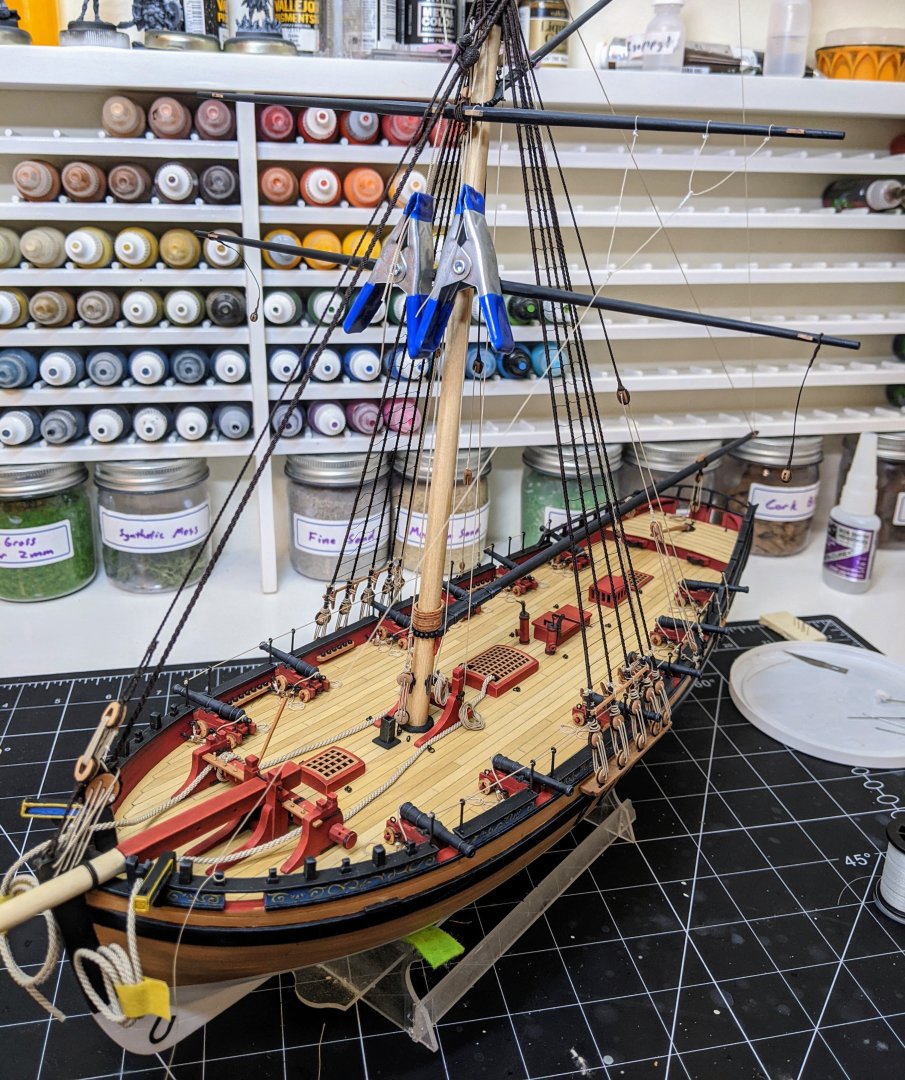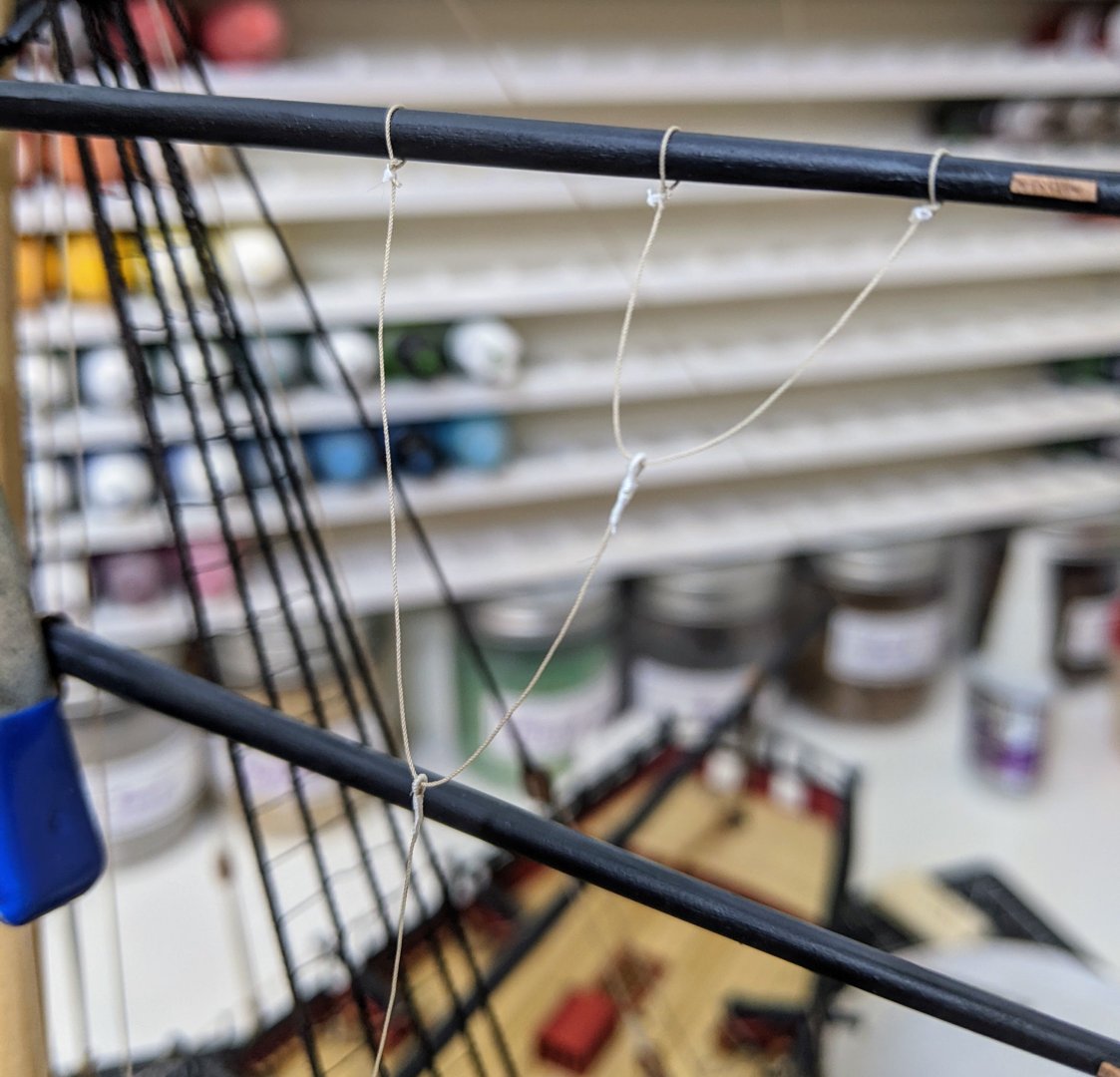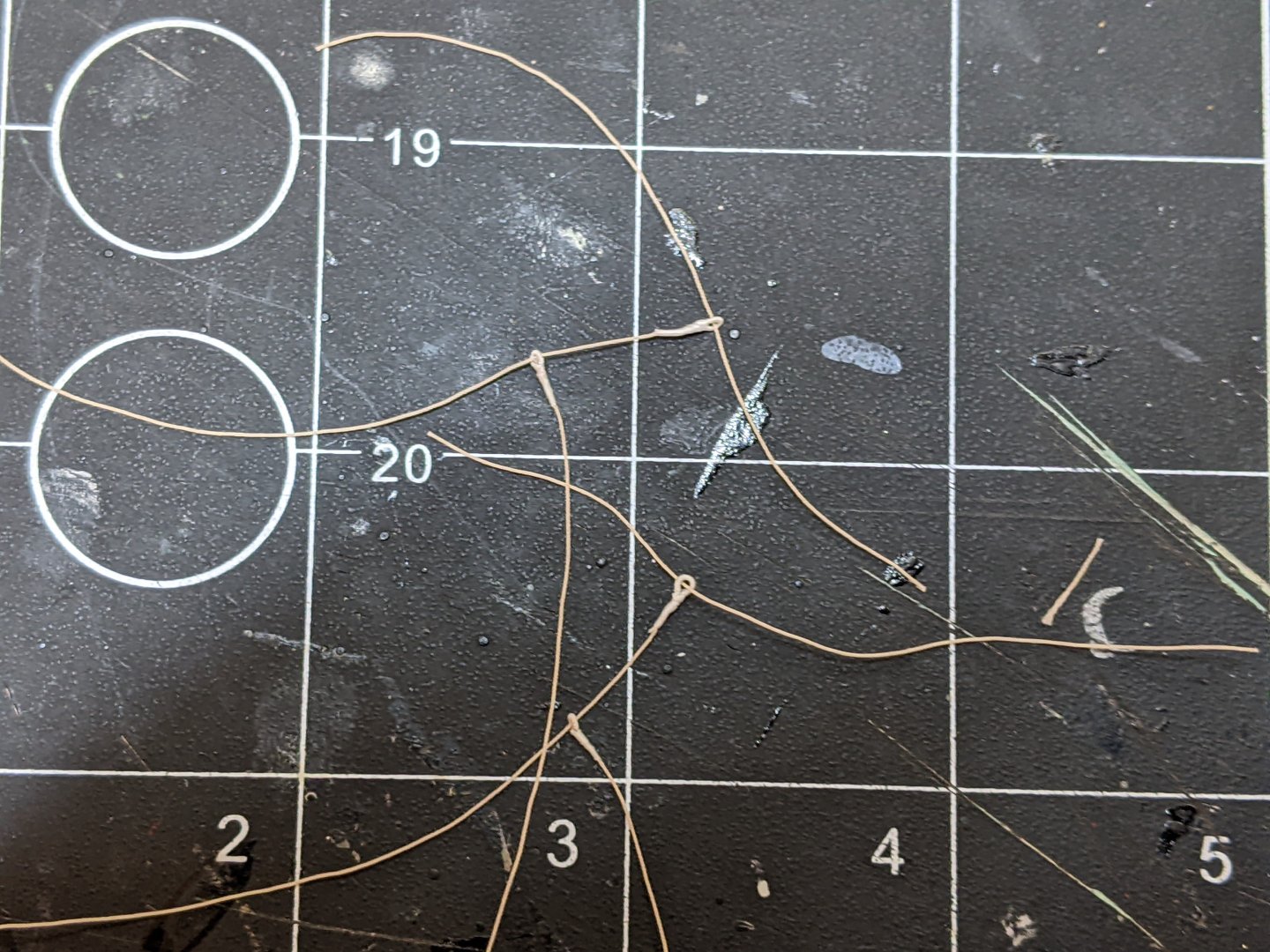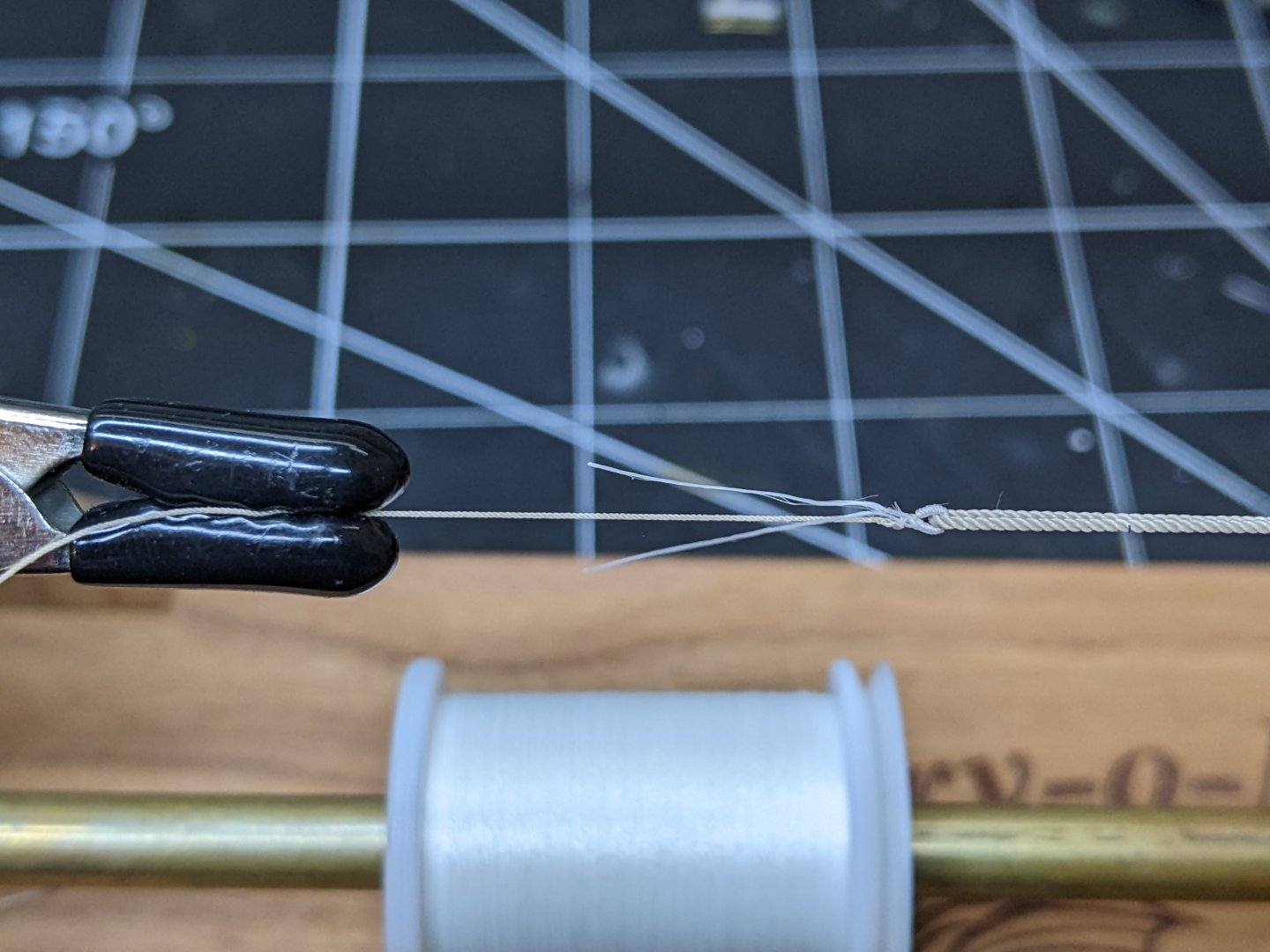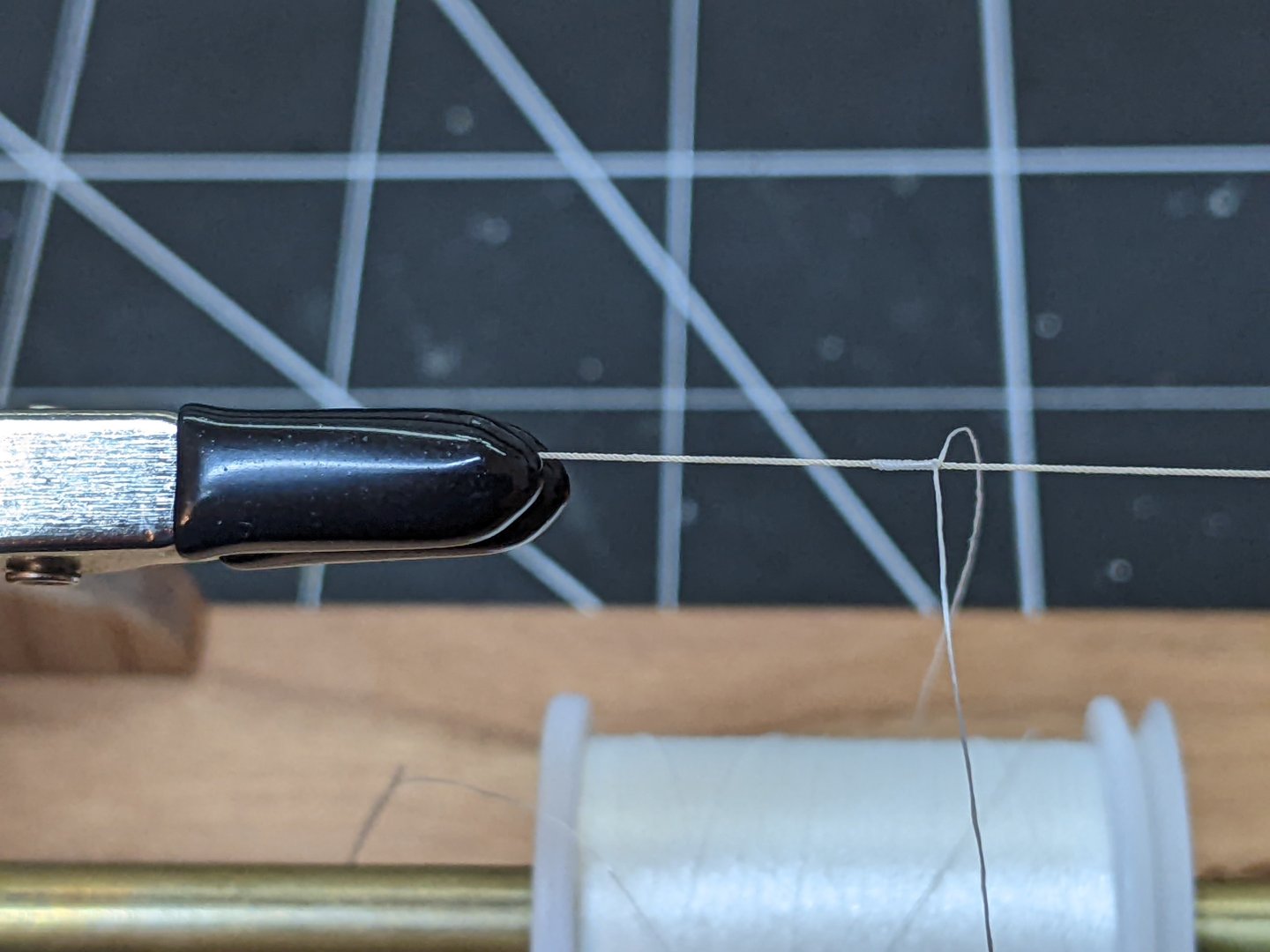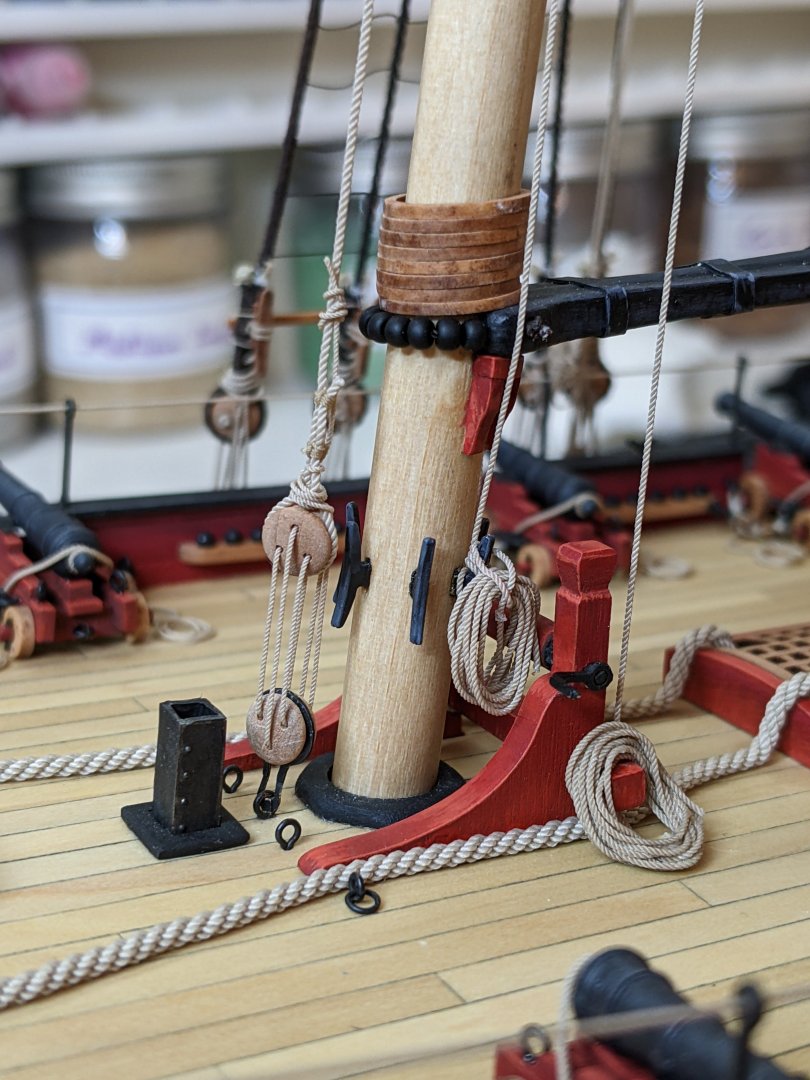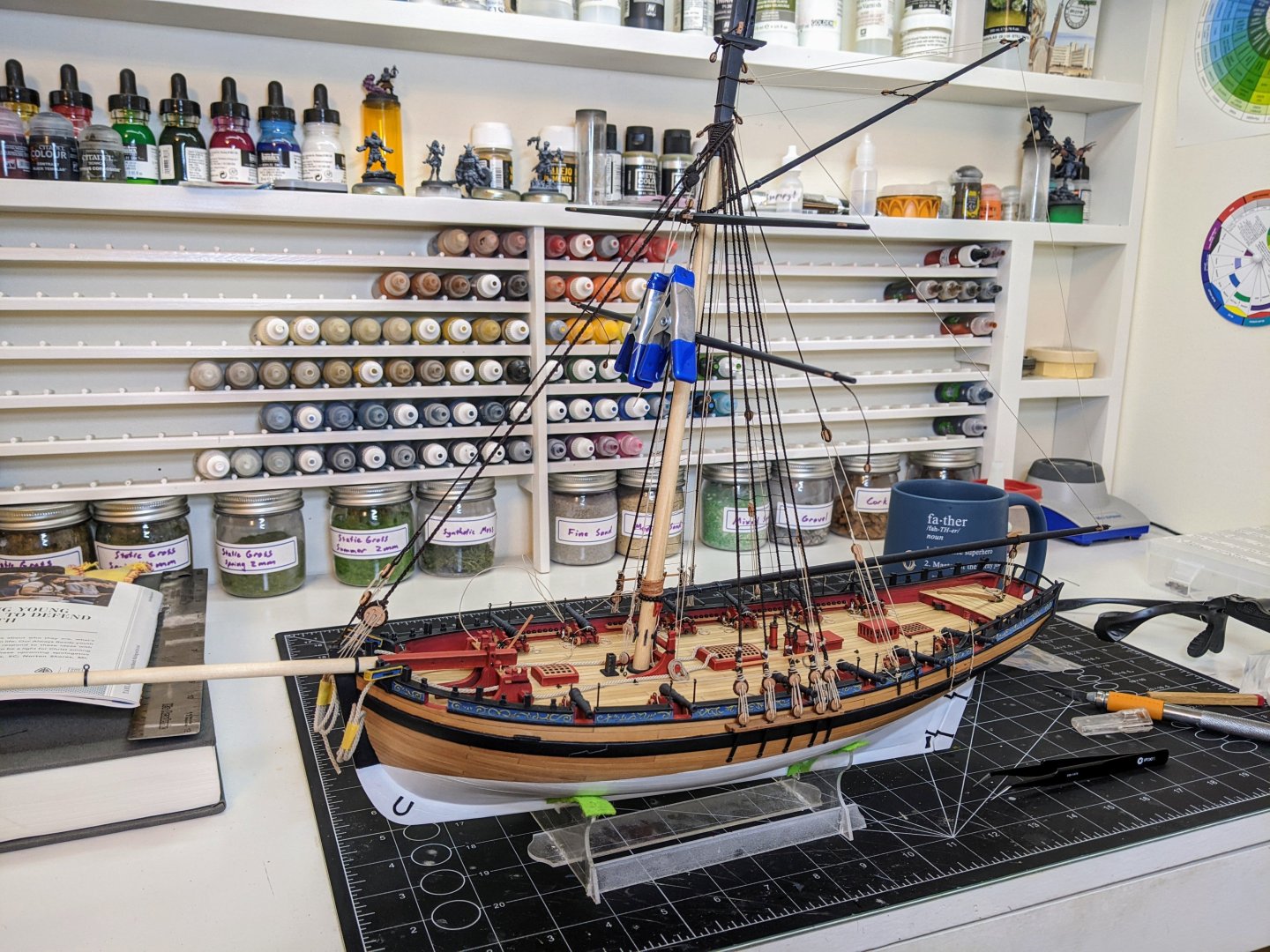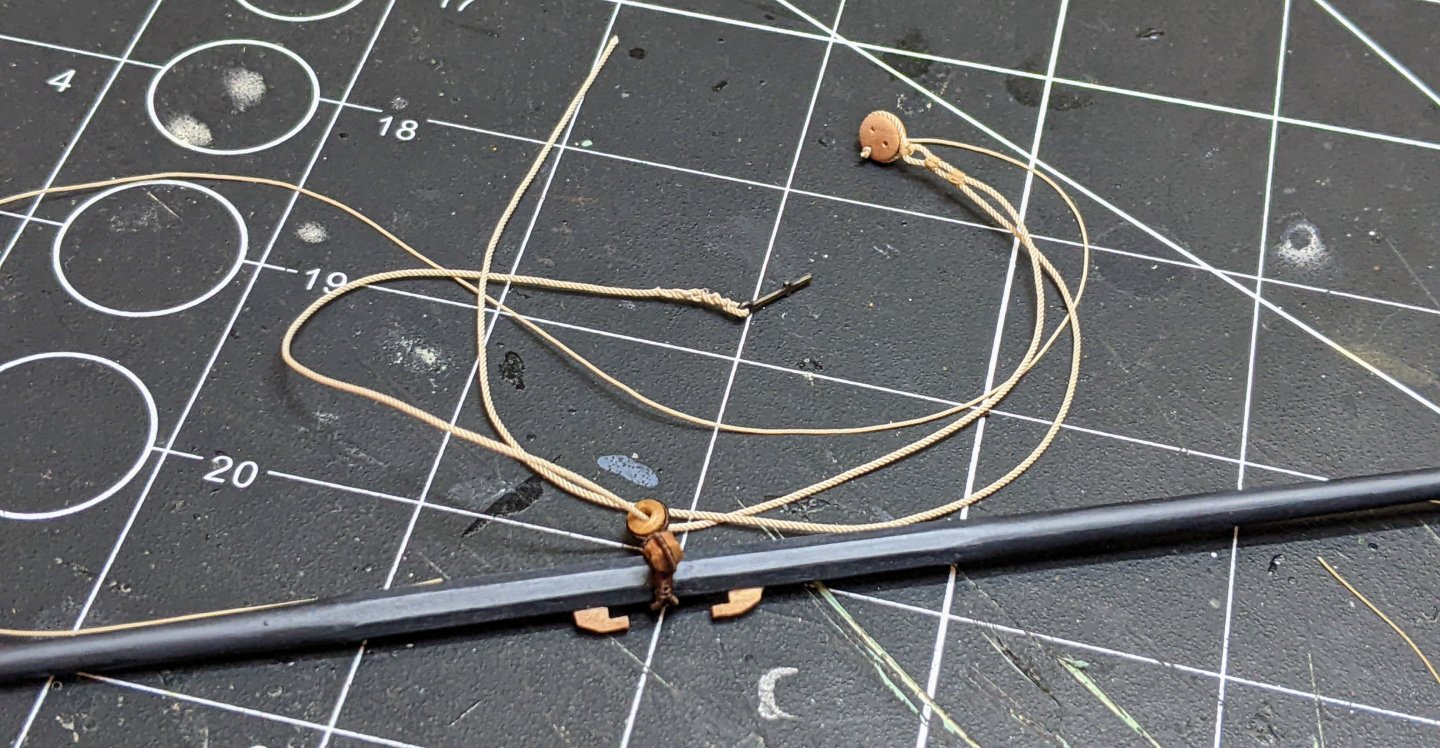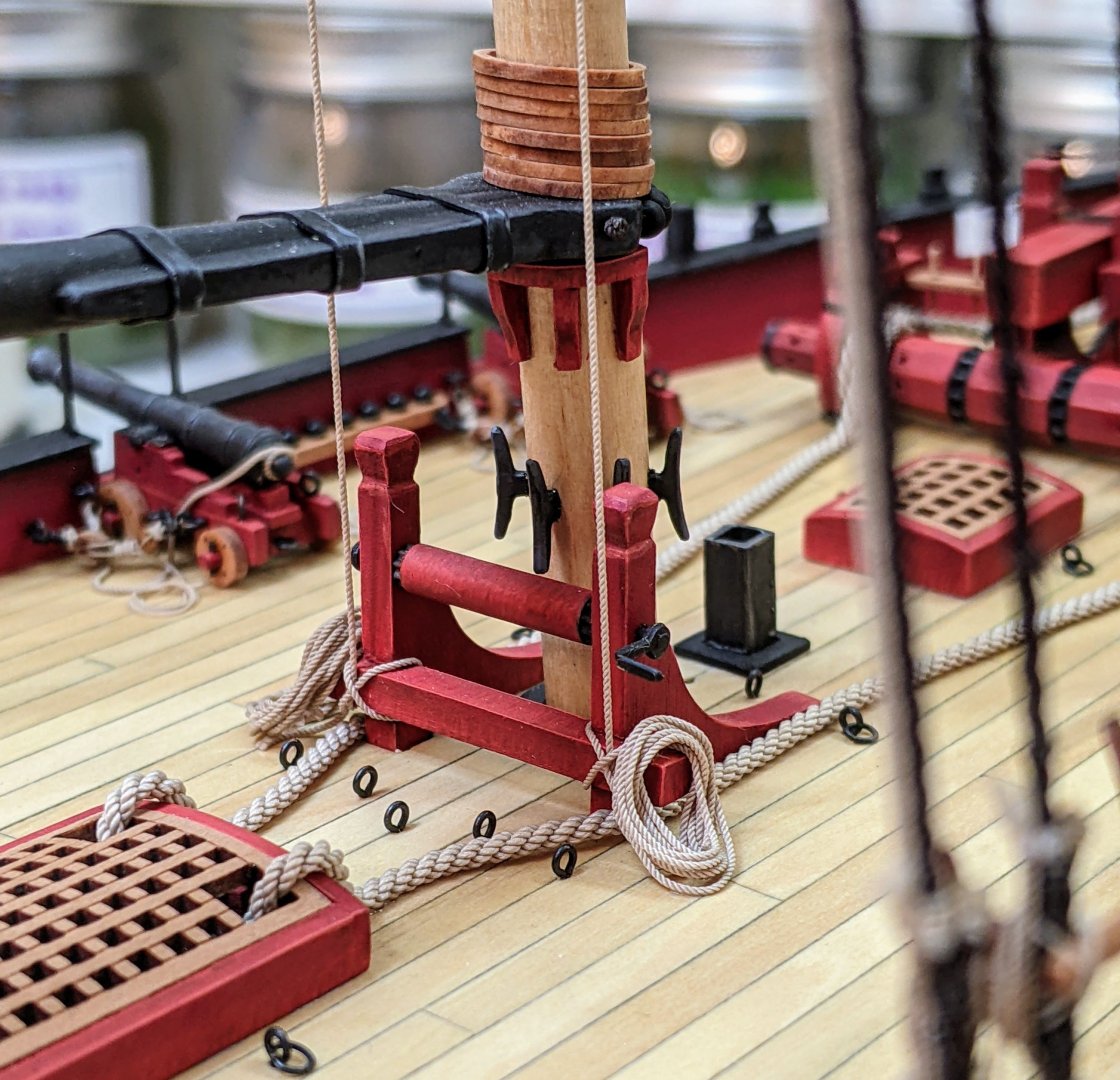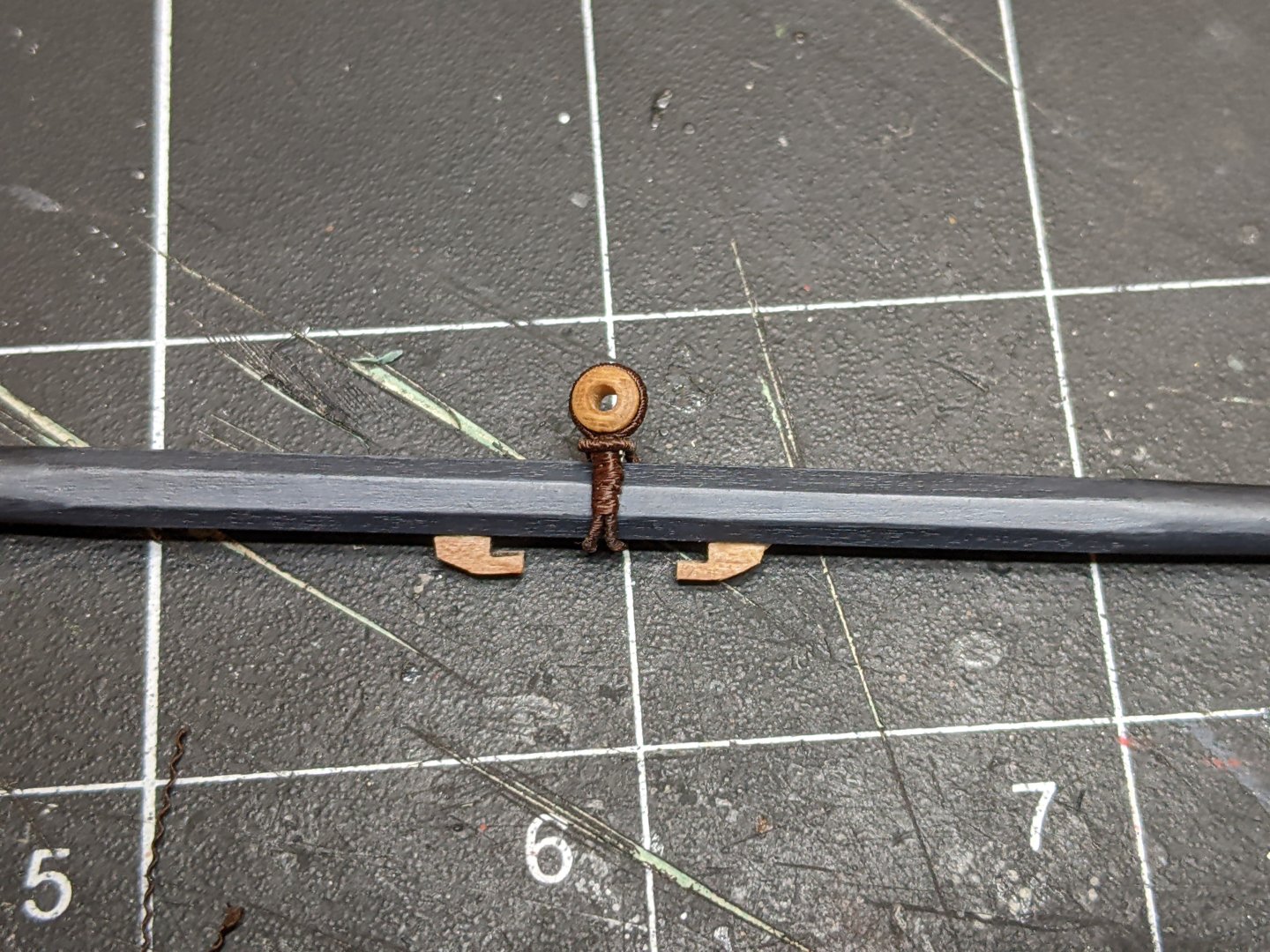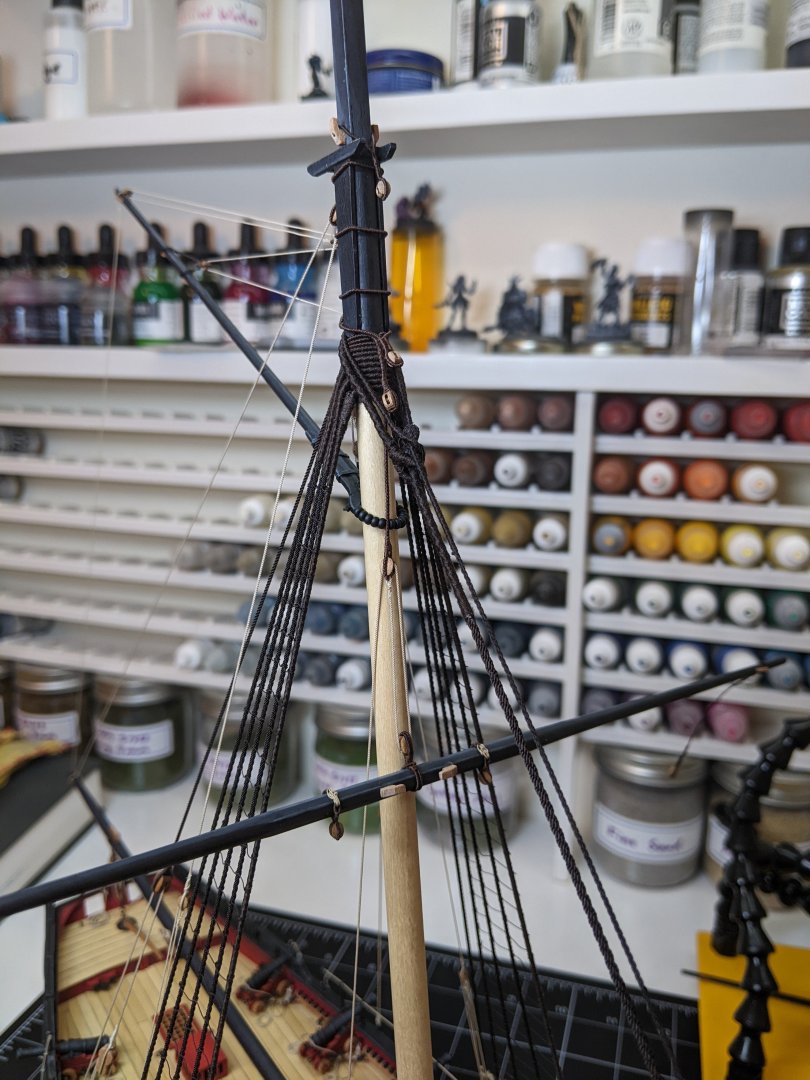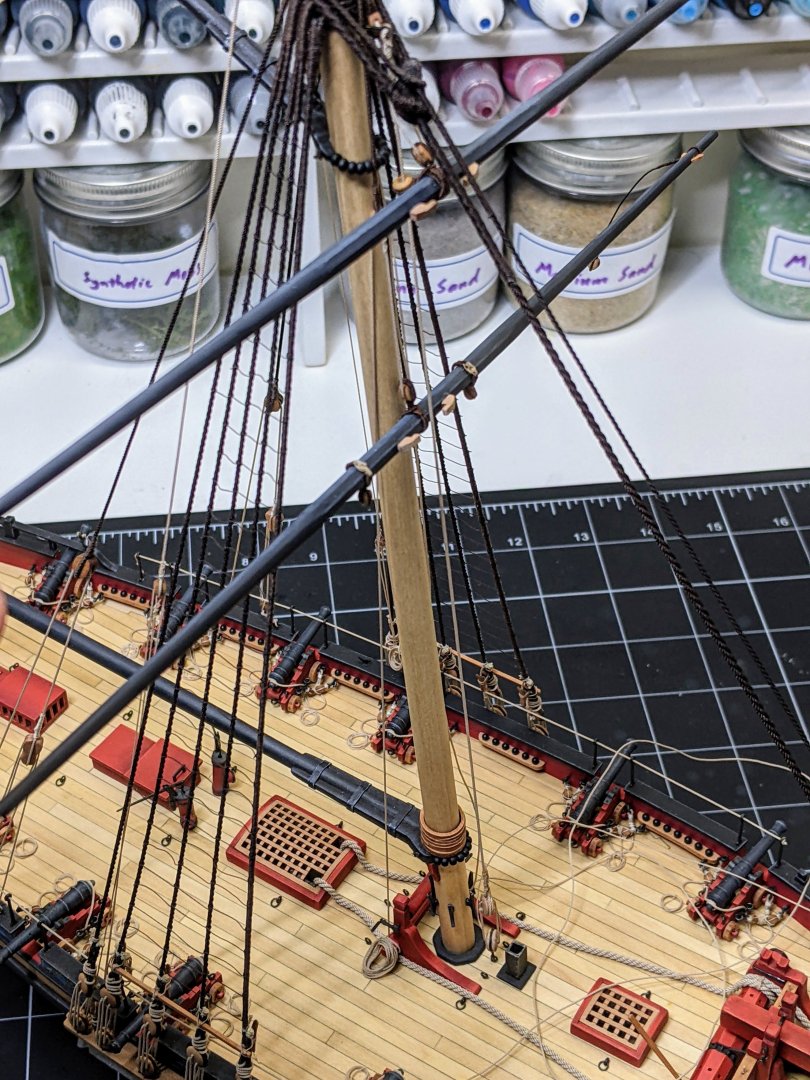-
Posts
1,356 -
Joined
-
Last visited
Content Type
Profiles
Forums
Gallery
Events
Everything posted by Thukydides
-
Another update, I found another list that I had not previously noticed in the document specifically listing the stores for carronades. Unfortunately the part which lists the breechings appears to be incomplete as it only list the stores for 100 and 90 gun ships. However extrapolating from their carronade armament earlier in the same list we can at least get the sizes for tackles and breechings for 32, 24 and 18pdr carronades. The list is from 179? (I can’t make out the last number at the moment, my current guess is 1798) 32pdr - 7 in breeching 24pdr - 6 1/2 in breeching 18pdr - 5 1/2 in breeching Edit: I just noticed that no sizes are given smaller than 5 1/2 in breeching so we could possibly infer that they were used for 12pdr carronades. See below:
-
Frankly there are a lot of question marks about the bowlines in general on alert, but as I am not doing sails the general convention is to rig them to the yard the sail would be on. I am going for a no sails, but as much running rigging as I can possibly include sort of asthetic and they also help to steady the squaresail yard which has very little else bracing it. As previously noted I am not going to be securing them for a while to allow access so I have lots of time to consider where best to run them to. Thanks for your input :).
- 562 replies
-
- vanguard models
- alert
-
(and 2 more)
Tagged with:
-
Yes AOST. The bowlines for the topsail go out to the end of the bowsprit and then back to presumably the pin rack. However the bowlines for the squaresail are only shown on p107 with the line terminating on the tip of the cathead.
- 562 replies
-
- vanguard models
- alert
-
(and 2 more)
Tagged with:
-
This stage of the build is hard as you do a lot but there is not a lot to show as finished. The more of the rigging you can do off the model the easier it will be and better it will look. It is just hard to resist putting it on the model so you can see progress. Good work.
- 144 replies
-
- HMS Speedy
- Vanguard Models
-
(and 1 more)
Tagged with:
-
I never thought to check Petersson, I do have his book.
- 562 replies
-
- vanguard models
- alert
-
(and 2 more)
Tagged with:
-
So further to this discussion I am pretty sure the carronade breechings are not included in the above list of breechings. I was in the process of transcribing the list (see below). 100 90 74 64 50 44 38 36 32 28 24 20 18 Sloop Iron Ordnance with ship carriages complete 32pdr 30 20 20 24 28 26 22 18 30 20 26 20 28 26 12 42 40 22 22 26 9 10 12 10 10 24 22 20 6 6 6 6 4 2 18 4 3 ½ 12 12 12 12 12 12 12 12 12 12 12 Breechings 7in 60 56 56 6½ 42 52 44 5½ 63 105 42 39 33 73 42 39 39 4½ 27 18 9 9 15 15 9 42 36 30 27 3½ I found when I compared it to the establishment list for armament from the same document that the number of breechings pretty much exactly matches 2x the number of 32pdrs (7in) and 24pdrs (6.5in) and 1.5x all other calibres (18&12pdr 5.5in, 9&6pdr 4.5in). This suggests that they were not taking carronades into account in this list and so we are back to square 1. I am going to take a closer look at the second list as it differs a little in the number of breechings and see what I can find.
-
Log #81: Squaresail Bowlines Thank you again to everyone for all the kind words. As I have had the past few days off work continues briskly. I decided to tackle the squaresail bowlines next. After considering the matter for a while I decided to follow the diagram in Lees which shows them with a half hitch followed by a sizing. Technically there should be two sizings according to lees, but at the tiny scale we are working I felt that was bridge too far for me at the moment. To make sure everything was proportional, I did a lot of measuring and ratioing based on both Lees and Goodwin before I even started so that I knew the exact length of every piece I was going to make. First step is serve a length of line for the eye. Next I spliced the eye and served over the splice. This was done 4 times with 2 longer ropes for the falls and 2 smaller ones. Then I also added 2 lines with no serving on them. You can see both completed bowlines below. To attach them to the yard the method I came up with was to make the loops off model and then slide them onto the yard and pull them tight. Since the half hitch plus sizing essentially makes a noose that can be tightened as desired, it made the process of sizing and then positioning the bowlines much easier. This also enables me to adjust their positioning later to make sure they don’t interfere with the clew lines. And just for display I temporarily tied the line to a timber head at the bow. It is still not exactly clear to me where the squaresail bowlines are belayed to as Goodwin only shows them ending near the catheads, but doesn’t elaborate on what exactly they were tied to. I am going to do some more reading as they will be hanging loose for a while anyways to enable me to access the base of the mast. I still need to tie the second set to the other side of the yard, but this was all I had time for today.
- 562 replies
-
- vanguard models
- alert
-
(and 2 more)
Tagged with:
-
Seems like a bunch of work for minimal gain. Removing the base is not hard. That being said if you ever go down this route I would say the way to go to avoid too many different versions would be to include a base as a separate piece that anyone who wants can then glue to the figure. That way you don't have to produce two different types of models.
-
I did this and you have to be really gentle as resin is brittle. First I used a saw to cut off most of the excess, then once there was only the small bit near his feet I used a craft knife to carefully shave it off the bottom in thin layers. The key is to go slow, especially as you get nearer the feet. BE's suggestion of sanding down would also work. I wouldn't recommend power tools, I suspect you will end up breaking it.
-
I had some time this morning to tidy up the lines so here is a minor update. I belayed the squaresail lift to one of the cleats on the mast. I also tied off the lanyards for the horse. I currently am using two clamps hanging by some spare rope to keep the squaresail yard lift under tension to set the shape of the rope. Next up are the bowlines for the squaresail yard. I really should have added these before I raised it, but I will do them now and let them hang loose so they don't get in the way.
- 562 replies
-
- vanguard models
- alert
-
(and 2 more)
Tagged with:
-
You should still do them off model. Just you are limited by the fact that you have to run the ropes through the rings on the guns. I did some posta on my method in my alert log. I like the base, she is looking nice.
- 96 replies
-
- Sphinx
- Vanguard Models
-
(and 2 more)
Tagged with:
-
Don't you have ring bolts? I am pretty sure some come with the kit.
- 125 replies
-
- Trial
- Vanguard Models
-
(and 1 more)
Tagged with:
-
It might be easier to do the breaching ropes off the model. Then you can attach them and the cannons to the ship. Also make sure they have enough length for the cannons to recoil.
- 125 replies
-
- Trial
- Vanguard Models
-
(and 1 more)
Tagged with:
-
Thank you, I appreciate the compliment. I would say that with the exception of the painting where I have some prior experience I brought to bear, everything else is just a matter of going slowly and carefully and reading lots. I have had the benefit of many fine alert build logs to follow. I truly believe that if you take your time you could do as good or better than I did for much of this build. I personally thing better rope makes a huge difference. Though you sometimes can't see the details per say, it is noticable. For example my lashings look much nicer when I use actual rope as opposed to thread. Also nicer blocks also help.
- 562 replies
-
- vanguard models
- alert
-
(and 2 more)
Tagged with:
-
Thanks Glenn, The issue with the squaresail yard is it is on the horse so not directly on the mast. The spreadsail yard I did pin to the mast to help hold it in place.
- 562 replies
-
- vanguard models
- alert
-
(and 2 more)
Tagged with:
-
Log #80: Raising the Squaresail & Spreadsail Yards Thank you everyone for all the encouragement. One of the nice things about this stage of the build is it feels like every time I sit down to work something small has been added to the model. So there is progress to see. I am continuing to pick away and slowly add to the rigging of the model. I made a small adjustment from my previous plans as I realized that all of ropes for the yards all need to belay down to the base of the mast. Consequently I am planning on raising them all and letting any braces hang loose until I no longer need access to that area. First up was to raise the spreadsail yard. This yard I pinned to the mast (though I didn’t use any glue) to help hold it in the correct place and allow me to put tension on the ropes. I also got the pendant for the topsail yard done. I belayed the fall for the spreadsail yard lift down to the bits and coiled some rope in the same way that I did for the inner tie. You may also notice from this picture that I have fixed the anchor cable in place. This was done with spots of super glue at various positions. I have decided in the end not to include any of the spare yards I made as they didn’t look aesthetically pleasing and the only place that made sense was the first shroud. However, my less than optimal job on the ratlines means that putting a straight yard against the first shroud accentuates the fact that it is not straight. Next was the squaresail yard. This rises on a horse and so I used one of the kit thimbles to serve as the guide. It is a bit over scale, but I didn’t feel like trying to find another solution so I left it as is. And below you can see the spreadsail yard with everything attached ready to go on the model. The horse caused me a huge amount of trouble as I kept making small mistakes that necessitated doing it all over again. In the end it took 5 attempts to get it right. The horse was made with a 0.6mm rope and I used the 0.2mm rope I have for the rose lashings for the seizing. I used 0.35mm rope for the lanyards. The deadeyes should really be a bit smaller, but I just used spare kit ones. I still need to figure out how I will ensure the yard creates tension on the square sail yard. It currently wants to lean to one side which I won’t be able to fix till I add the bowlines and the clewlines for the topsail run in front of it. The problem with this yard is it would be held level by the sail, but there is no easy way that I can see to hold it steady. I had previously considered adding the reef lines and then attaching them to the spreadsail yard as that is the approximate location they would attach to the sail. I will make a decision on this later.
- 562 replies
-
- vanguard models
- alert
-
(and 2 more)
Tagged with:
-
Congrats on another fantastic build.
- 648 replies
-
- Indefatigable
- Vanguard Models
-
(and 1 more)
Tagged with:
-
I like the idea of a ship in a bottle trapped by the ice. Sounds like a really cool project.
- 109 replies
-
- Ghost Ship
- Jenny
-
(and 2 more)
Tagged with:
-
Fantastic. Wonderful work as always. I really enjoy how realistic you make the sails look.
- 200 replies
-
- Whaling Bark
- Charles W Morgan
-
(and 1 more)
Tagged with:
About us
Modelshipworld - Advancing Ship Modeling through Research
SSL Secured
Your security is important for us so this Website is SSL-Secured
NRG Mailing Address
Nautical Research Guild
237 South Lincoln Street
Westmont IL, 60559-1917
Model Ship World ® and the MSW logo are Registered Trademarks, and belong to the Nautical Research Guild (United States Patent and Trademark Office: No. 6,929,264 & No. 6,929,274, registered Dec. 20, 2022)
Helpful Links
About the NRG
If you enjoy building ship models that are historically accurate as well as beautiful, then The Nautical Research Guild (NRG) is just right for you.
The Guild is a non-profit educational organization whose mission is to “Advance Ship Modeling Through Research”. We provide support to our members in their efforts to raise the quality of their model ships.
The Nautical Research Guild has published our world-renowned quarterly magazine, The Nautical Research Journal, since 1955. The pages of the Journal are full of articles by accomplished ship modelers who show you how they create those exquisite details on their models, and by maritime historians who show you the correct details to build. The Journal is available in both print and digital editions. Go to the NRG web site (www.thenrg.org) to download a complimentary digital copy of the Journal. The NRG also publishes plan sets, books and compilations of back issues of the Journal and the former Ships in Scale and Model Ship Builder magazines.

